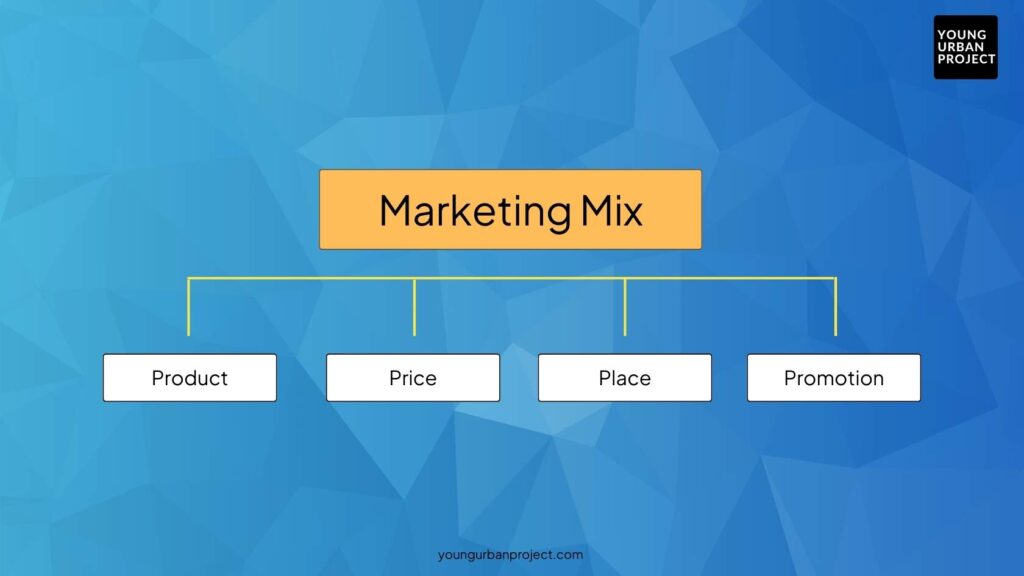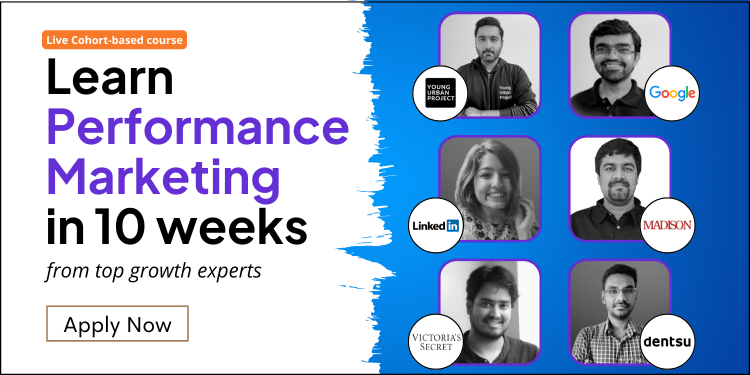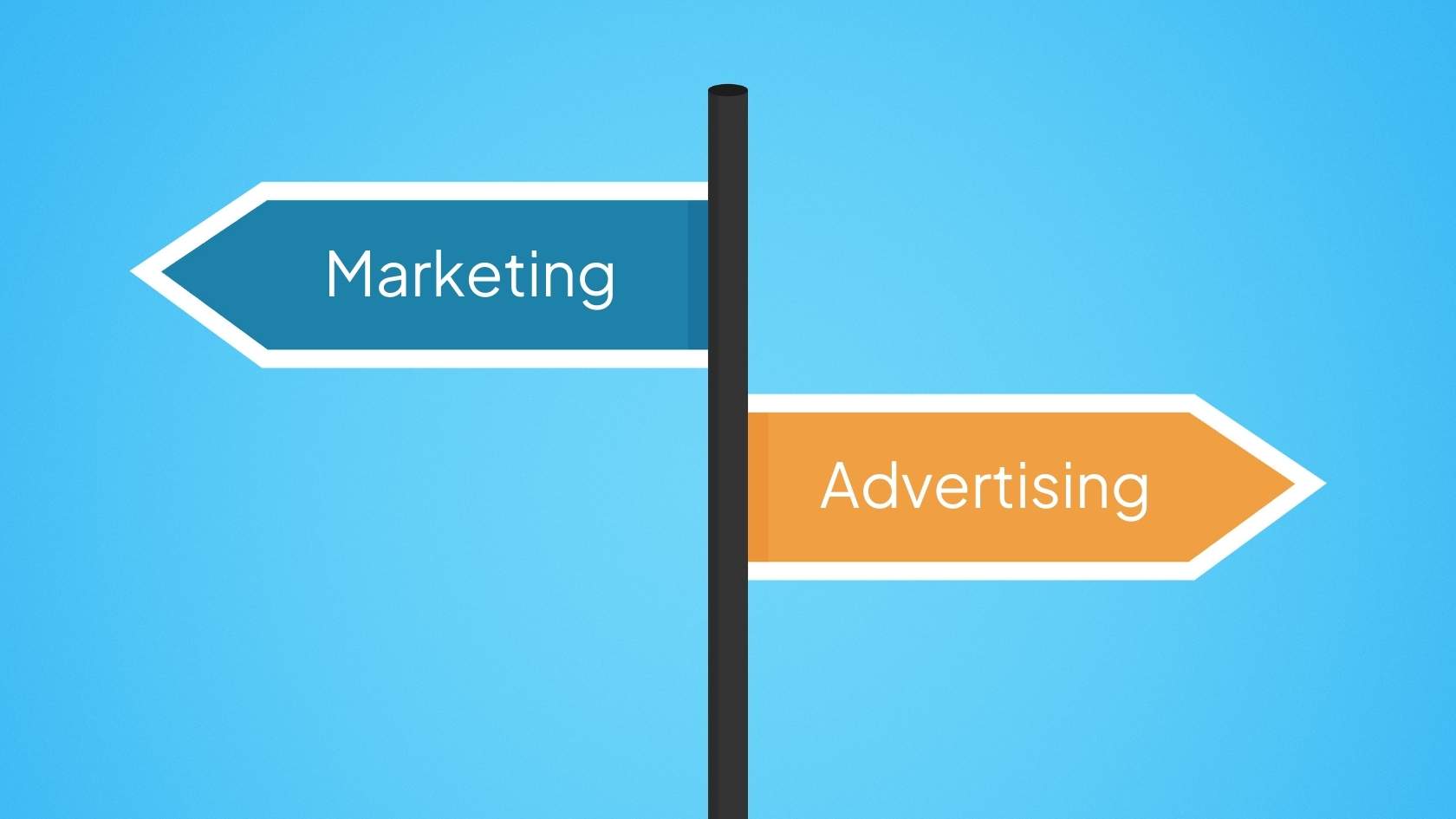When businesses try to reach their target audience, they often use terms like “marketing” and “advertising” interchangeably. However, there’s a huge difference between marketing and advertising, each serving unique functions within a company’s strategy. The debate of marketing vs advertising isn’t just about wordplay—understanding their differences can significantly impact a company’s approach to building its brand, attracting customers, and achieving long-term success.
Table of Contents
The scope of Marketing is broad and it guides all efforts to understand the market and meet customer needs. Advertising, on the other hand, is a tool used within marketing to specifically promote products and drive short-term actions, often using paid media. So let’s explore the core differences between marketing and advertising and how they work together to clarify how each contributes to a brand’s growth. Whether you’re a marketer, advertiser, or business owner, understanding these differences is important to building effective strategies that resonate with your audience.
What is Marketing?
Marketing is the full spectrum of activities that a business performs to create value, attract, and retain customers. Think of marketing as the strategic plan that encompasses everything—from product development to customer engagement.
What is the Marketing Mix?
One of the most fundamental concepts in marketing is the marketing mix, often referred to as the 4Ps:

- Product: The actual goods or services being offered.
- Price: How much the product or service costs.
- Place: Where and how the product will be distributed.
- Promotion: How the product will be communicated to potential customers (this is where advertising comes in).
Marketing is a dynamic, ongoing process that considers long-term objectives, market research, and brand identity. It’s about creating value and building relationships.

Marketing Channels
Marketing channels are the various platforms or avenues businesses use in their marketing plan to communicate, promote, and engage with their target audience. These channels play a crucial role in delivering marketing messages and driving conversions, each offering unique advantages depending on the target audience and the type of campaign. To maximize impact, many businesses adopt an omnichannel marketing strategy, seamlessly integrating these channels to create a cohesive and consistent customer experience. Here are some of the most prominent marketing channels:
1. Search Engine Optimization (SEO)
SEO involves optimizing website content to improve its ranking on search engines like Google. By enhancing on-page elements such as keywords, meta descriptions, and backlinks, businesses can increase organic traffic. Effective SEO strategies ensure that a website appears when users search for relevant products, services, or information, which drives long-term results by building visibility and trust over time.
2. Social Media Marketing
Platforms like Instagram, Facebook, and LinkedIn offer businesses a dynamic way to connect with their audience. Through organic content, paid ads, and influencer collaborations, brands can engage directly with followers, respond to customer inquiries, and increase brand awareness. Social media allows for both creative expression and targeted campaigns, making it a versatile tool for reaching a wide range of demographics.
3. Email Marketing
This channel remains one of the most effective forms of direct communication with customers. By sending personalized emails to a segmented list of subscribers, businesses can promote products, announce events, or share valuable content. Email marketing campaigns can be automated, allowing for timely and relevant messaging, whether for lead nurturing, promotional offers, or customer loyalty.
4. Content Marketing
Content marketing focuses on creating valuable, informative, and entertaining content designed to attract and engage a target audience. This can include blogs, videos, podcasts, eBooks, and more. The goal is to provide useful information that addresses the audience’s pain points or interests, which builds brand authority and fosters long-term relationships.
5. Influencer Marketing
Partnering with influencers allows businesses to leverage the credibility and reach of popular figures in their industry. Influencers, with their established trust among followers, can help brands reach new audiences and promote products in an authentic way. Whether through social media posts, blog mentions, or video content, influencer marketing is a powerful tool to build awareness and influence purchasing decisions.
Also read: The Importance of Marketing in Business
What is Advertising?
Advertising is a marketing communication strategy that involves promoting a product, service, or brand to a target audience using paid messaging. It is one of the most visible and direct ways to reach potential customers and persuade them to take action, whether that’s making a purchase, signing up for a service, or simply becoming aware of a brand. Unlike broader marketing efforts, advertising focuses specifically on creating impactful campaigns designed to capture attention and drive conversions.
Through the ages, advertising has evolved significantly—from printed pamphlets and radio jingles to television commercials and now highly targeted digital ads. Despite these advancements, the core goal remains unchanged: to inform, persuade, and remind customers of a brand’s value proposition.
Also read: What is Advertising Copy
Importance of Advertising
The importance of Advertising cannot be understated as it is a cornerstone of any business’s marketing efforts, providing significant advantages across various aspects of a brand’s lifecycle. Beyond promoting products or services, advertising plays a critical role in shaping public perceptions, supporting market competition, and driving business growth. Its importance extends to the following areas:
1. Brand Building and Recognition
Advertising is instrumental in establishing and enhancing a brand’s identity. Consistent messaging, visuals, and values conveyed through advertisements build a distinct image in consumers’ minds and can deeply impact the consumer buying process. Over time, this fosters brand loyalty and ensures that a brand remains top-of-mind in competitive markets.
2. Reaching Target Audiences
With advancements in technology and data analytics, advertising allows businesses to pinpoint and connect with their ideal customers. This level of precision ensures resources are directed toward audiences most likely to engage with the brand, maximizing ROI and fostering meaningful connections.
3. Educating Consumers
Advertising serves as a powerful medium to educate consumers about a product’s features, benefits, and uses. It informs potential customers about innovations, promotions, or improvements, helping them make informed purchasing decisions.
4. Driving Economic Growth
Advertising stimulates economic activity by encouraging consumer spending and supporting the growth of businesses across industries. It creates demand for goods and services, which in turn drives production, employment, and market expansion.
5. Enhancing Competitive Edge
In highly saturated markets, advertising helps brands differentiate themselves by emphasizing their unique selling propositions (USPs). Effective campaigns can highlight a company’s strengths and foster consumer preference, giving it a distinct competitive advantage.
6. Supporting Product Launches
Advertising is critical during the launch phase of new products or services. It generates buzz, builds anticipation, and ensures that a new offering captures the attention of potential customers, accelerating its acceptance in the market.
7. Encouraging Repeat Business
Through retargeting and reminder ads, advertising reinforces customer relationships by keeping a brand relevant and accessible. It helps businesses maintain visibility, ensuring repeat purchases and long-term customer loyalty.
8. Fostering Emotional Connections
Well-crafted advertising campaigns go beyond logic and facts to evoke emotions, creating a deeper connection with audiences. Whether through storytelling, humor, or shared values, emotional resonance strengthens the bond between consumers and the brand.
9. Shaping Public Perceptions
Advertising is a powerful tool for influencing public perceptions and shaping opinions about a brand, its products, or its initiatives. This is particularly crucial during rebranding efforts or when addressing public relations challenges.
10. Enhancing Global Reach
For businesses looking to expand internationally, advertising helps bridge cultural and geographical gaps. Multilingual and region-specific campaigns enable brands to establish a presence in global markets while catering to local preferences.
11. Enabling Data-Driven Decisions
Modern advertising leverages data and analytics to track the performance of campaigns in real-time. These insights help businesses refine their strategies, optimize budgets, and achieve better outcomes over time.
12. Improving Overall Marketing Strategy
As a subset of marketing, advertising complements other efforts like PR, content creation, and customer engagement. Its impact provides valuable feedback that can influence broader marketing strategies, ensuring alignment with business objectives.

Types of Advertising
Modern advertising offers a variety of approaches, each tailored to specific audiences, platforms, and business goals. Below are the most common types of advertising:
1. Traditional Advertising
Traditional advertising includes methods that have been used for decades and remain relevant in certain contexts today. Examples include:
- Television Advertising: TV commercials have been a staple for reaching broad audiences during specific time slots. Despite the rise of digital streaming, TV ads remain effective for creating mass appeal.
- Print Advertising: Magazines, newspapers, and flyers are used to target specific demographics, such as readers of specialized publications.
- Radio Advertising: Radio spots are cost-effective ways to connect with local audiences or niche markets.
- Billboards and Outdoor Advertising: High-visibility placements like billboards, bus stops, and transit ads capture attention in busy areas.
While traditional advertising has a broad reach, it often lacks the precision targeting of digital methods.
2. Social Media Advertising
Social media platforms like Facebook, Instagram, LinkedIn, and X offer powerful tools for targeting specific demographics and engaging audiences. Social media advertising includes:
- Sponsored Posts: Brands pay to boost visibility for posts or promotions.
- Carousel Ads: These showcase multiple products or features in a swipeable format.
- Video Ads: Engaging video content tailored to platform algorithms for maximum reach.
What sets social media advertising apart is its ability to deliver hyper-targeted campaigns based on user behavior, demographics, and interests. Global ad spending in the Social Media Advertising market was forecasted to hit $243.60 billion in 2024. It is anticipated to grow at a compound annual growth rate (CAGR) of 10.78% from 2024 to 2029, reaching an estimated market value of $406.50 billion by 2029.
3. Pay Per Click (PPC) Advertising
PPC advertising is a form of digital marketing where advertisers pay a fee each time their ad is clicked. It’s a performance-based model often used in search engine marketing (SEM) and on platforms like Google Ads and Bing Ads. Key benefits include:
- Immediate Results: Unlike SEO, PPC delivers instant visibility in search engine results.
- Targeted Traffic: Advertisers can target specific keywords, locations, and even device types.
- Flexible Budgeting: PPC campaigns can be scaled up or down depending on budget and goals.
For example, a shoe retailer might bid on keywords like “best running shoes” to appear at the top of search results. PPC ads are particularly effective for driving traffic during seasonal promotions or product launches.
4. Mobile Advertising
With the ubiquity of smartphones, mobile advertising has become an essential part of modern strategies. It includes:
- In-App Ads: Ads that appear within mobile apps, ranging from banners to interactive videos.
- Push Notifications: Short, clickable messages sent directly to a user’s device.
- SMS Marketing: Promotional messages sent via text to opt-in customers.
Mobile advertising leverages location-based data, making it highly effective for targeting on-the-go users. By 2028, mobile is projected to account for approximately $255.8 billion in the social media advertising market.
Differences Between Marketing and Advertising
While the terms marketing and advertising are often used interchangeably, they represent distinct concepts that play different roles in a business’s strategy to attract and retain customers. Here’s a comprehensive look at the key differences between marketing and advertising:
| Aspect | Marketing | Advertising |
| Definition | A comprehensive process of creating, communicating, delivering, and exchanging value to customers. | A specific activity within marketing that focuses on paid promotions to inform and persuade audiences. |
| Scope | Broad, encompassing market research, product development, pricing, distribution, customer engagement, and advertising. | Narrower, as it is a subset of marketing focused on promoting offerings to the target audience. |
| Purpose | Builds long-term relationships with customers and establishes brand identity. | Drives immediate awareness and action, such as purchases or inquiries about a product or service. |
| Focus Area | Includes product strategy, customer needs, branding, and communication. | Highlights a particular product, service, or campaign through media channels. |
| Timeframe | Often involves long-term strategies and continuous engagement with the market. | Primarily short-term campaigns designed to achieve specific goals within a defined period. |
| Tools and Techniques | Involves market research, SEO, content marketing, social media strategies, CRM tools, and more. | Uses paid media like TV commercials, online ads, billboards, and print advertising. |
| Channel Usage | Employs multiple channels, including owned (website), earned (word-of-mouth), and paid (ads). | Primarily uses paid channels like digital advertising, print, radio, and social media. |
| Budget | Budget is allocated across various elements, such as research, advertising, PR, and customer engagement. | Budget is spent solely on promoting specific campaigns through media placements. |
| Measurement | Success is measured through overall KPIs like market share, customer satisfaction, and brand equity. | Metrics include impressions, clicks, conversions, and ROI for specific ad campaigns. |
| Audience Targeting | Focuses on understanding and segmenting audiences for tailored strategies. | Targets audiences directly through specific messaging and calls-to-action in ad campaigns. |
| Examples | Creating a marketing strategy that includes SEO, content marketing, pricing, and distribution. | Running a TV commercial or social media ad campaign for a new product. |
| Key Component of Strategy | Covers the entire customer journey, from awareness to loyalty. | Primarily focuses on the awareness and persuasion stages of the customer journey. |
Also read: The Difference Between Selling and Marketing
Future of Marketing and Advertising
The future of marketing and advertising is rapidly evolving, driven by advancements in technology, changes in consumer behavior, and shifts in regulatory landscapes. Here are some key trends shaping the future:
1. AI and Automation
Artificial Intelligence is transforming marketing by enabling hyper-personalized experiences, predictive analytics, and efficient campaign management. Tools powered by AI can analyze vast datasets to uncover insights, automate repetitive tasks, and deliver precision-targeted ads.
💡 Did you know: The AI marketing industry is anticipated to surge from $15.84 billion in 2021 to over $107.5 billion by 2028.
2. Increased Focus on Privacy and First-Party Data
With tightening regulations around data privacy and the deprecation of third-party cookies, brands are pivoting towards first-party data strategies. This shift emphasizes building direct relationships with consumers, utilizing loyalty programs, and creating value-driven interactions that encourage customers to share their information willingly.
3. Sustainability and Ethical Practices
Consumers, particularly Gen Z and Millennials, demand brands align with sustainability and ethical values. Marketers are integrating sustainability into their operations, from reducing the carbon footprint of advertising campaigns to adopting environmentally friendly packaging. These efforts are not just about compliance but also about winning trust and loyalty.
💡Did you know: In the past five years, products with ESG claims grew faster, making up 56% of total growth. They saw 28% growth compared to 20% for products without ESG claims.
4. Generative AI and Content Creation
Generative AI tools are revolutionizing content production by enabling faster and more diverse creative outputs. However, brands must balance the efficiency of these tools with human oversight to ensure quality, legal compliance, and alignment with brand voice.
5. New Formats and Channels
The way consumers interact with information is diversifying. Innovations like voice search, image-based search, and multisearch capabilities are becoming mainstream, demanding marketers adapt their strategies. Platforms like Google Lens and AI-driven assistants are changing how brands present product data and interact with customers.
6. Experience-Driven Marketing
As younger generations value experiences over mere products, brands are focusing on storytelling and creating immersive, memorable customer interactions. Augmented Reality (AR) and Virtual Reality (VR) are also becoming important tools for enhancing these experiences.

7. Agility and Real-Time Marketing
Brands are shifting from rigid, long-term plans to agile strategies that allow for continuous adjustment. Real-time marketing, driven by immediate consumer feedback and market conditions, is becoming a norm.
Conclusion
Marketing and advertising are both integral components of a business’s strategy. While marketing is the comprehensive approach that helps businesses build their brand and maintain customer relationships, advertising is the direct, means of promoting products and driving immediate action. Understanding the differences and knowing when and how to use each will help businesses create more effective campaigns and build lasting customer loyalty.
FAQs: Marketing vs Advertising
What is an example of marketing and advertising?
An example of marketing would be a company conducting market research to understand customer preferences and then creating a strategy to meet those needs. An advertising example would be the company launching a paid TV commercial to promote a new product.
Is marketing considered advertising?
No, advertising is a part of marketing, but marketing encompasses a broader strategy, including market research, branding, and customer relationship management.
Is marketing selling or advertising?
Marketing is not solely about selling or advertising. It’s a strategic approach to understanding and engaging customers to ensure they are satisfied and loyal to your brand.
Why is marketing and promotion important?
Marketing helps businesses understand customer needs and build relationships. Promotion, often through advertising, is necessary to drive immediate sales and increase brand awareness.
Do marketing and advertising go together?
Yes, marketing and advertising complement each other. Marketing provides the overall strategy, while advertising is a tool to execute certain aspects of that strategy.
How do marketing and advertising affect consumer decisions?
Marketing creates awareness and trust, while advertising motivates consumers to take action, often driving them to make purchasing decisions.
What Are the Similarities Between Marketing and Advertising?
Both marketing and advertising aim to promote a product, increase sales, and build brand recognition. However, advertising is a more targeted, paid form of communication within the broader marketing strategy.

